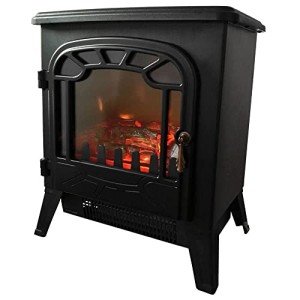15 Reasons To Love Small Fireplaces
A Comprehensive Guide to Small Fireplaces: Efficient Heating and Cozy Living
In an age where energy effectiveness and area optimization are ending up being significantly essential, small fireplaces have actually emerged as an enticing alternative to traditional, bulky hearths. These compact heating options offer warmth and a centerpiece for any room, heightening both convenience and aesthetic appeal. This post checks out the different types of small fireplaces, their advantages, setup considerations, and maintenance tips, eventually helping house owners make informed decisions when thinking about these lovely heating options.
Understanding Small Fireplaces
Small fireplaces offer a range of styles, consisting of electric, gas, ethanol, and wood-burning designs. Each type presents special advantages and style possibilities, making them appropriate for numerous living spaces.
Types of Small Fireplaces
Fireplace Type
Description
Pros
Cons
Electric
Uses electricity to produce heat. Offers many designs, including wall-mounted and freestanding systems.
- Easy to install
- Low upkeep
- No venting needed
- Limited heat output
- May sustain greater electrical power costs
Gas
Burns gas or gas. Frequently offered as logs in a traditional fireplace or modern designs.
- Efficient heat output
- Cleaner than wood
- Easy ignition
- Requires gas line setup
- Some units require venting
Ethanol
Burns bioethanol, providing genuine flames without a chimney.
- Eco-friendly
- Portable
- No installation required
- Limited heat output
- Higher fuel expenses
Wood-Burning
Traditional fireplaces that burn firewood. Frequently utilized in more rustic settings.
- Great heat output
- Rich ambiance
- Can be used during power blackouts
- Requires a chimney
- Regular maintenance and cleansing
Advantages of Small Fireplaces
- Area Efficiency: Small fireplaces are perfect for apartment or condos, apartments, and smaller homes. They take full advantage of warmth without taking up extreme floor area.
- Cost-Effective Heating: In particular cases, small fireplaces can supplement central heating unit, reducing total energy expenses while creating a more comfortable environment.
- Atmosphere and Aesthetics: They supply an inviting focal point to a space, producing a cozy atmosphere perfect for relaxation and celebrations.
- Flexibility: Available in numerous styles and styles, small fireplaces can match any design, from modern minimalist to rustic traditional.
Setup Considerations
When contemplating a small fireplace, setup is an important aspect that can impact the choice of design. Below are practical factors to consider:
- Local Regulations: Building codes can vary by location; constantly examine regional guidelines before setup.
- Ventilation Needs: Depending on the type, small fireplaces may need different ventilation systems. Gas fireplaces may require venting outdoors, while electric models don't.
- Power Source: Electric designs need proximity to electrical outlets, while gas and ethanol designs may require a gas line or fuel storage.
- Weight and Structure: Installing wall-mounted systems might require reinforced wall areas, whereas free-standing models are easier to move.
Maintenance Tips
Like any other home appliance, small fireplaces require routine maintenance to function effectively and securely. Here are necessary upkeep suggestions for numerous fireplace types:
For Electric Fireplaces:
- Cleaning: Wipe down the unit with a soft fabric to eliminate dust and keep the heating system ducts clear.
- Examination: Check the power cable frequently for any damages or indications of wear.
For Gas Fireplaces:
- Annual Inspections: Schedule annual evaluations by a professional to guarantee safe gas flow.
- Tidy the Logs: Regularly tidy the burner and logs to maintain optimal efficiency.
For Ethanol Fireplaces:
- Fuel Storage: Store ethanol fuel safely far from direct sunlight and heat sources.
- Regular Cleaning: Clean the burner after each use to maintain effectiveness and avoid soot buildup.
For Wood-Burning Fireplaces:
- Chimney Sweeping: Have the chimney expertly cleaned up as soon as a year to prevent creosote accumulation.
- Firewood Storage: Only use dry, seasoned wood to minimize smoke and promote effective burning.
Regularly Asked Questions
1. Can I install a small fireplace myself?
While some electric and ethanol fireplaces are relatively simple to set up, it is a good idea to employ a professional for gas and wood-burning units to make sure compliance with regional building regulations.
2. How much does it cost to run a small fireplace?
The expense will differ depending upon the kind of fireplace. Usually, electric fireplaces may incur greater electrical energy expenses, while wood-burning alternatives can draw from sustainable firewood supplies.
3. Do I require a license for setup?
Licenses are generally required for gas and wood-burning fireplaces due to their installation complexity and security regulations. Always contact regional authorities.
4. How long can Electric Fireplaces UK run an electric fireplace?
Most electric fireplaces can run for extended periods; nevertheless, it's advised to follow manufacturer standards to avoid getting too hot or harming the unit.
5. What type of small fireplace is best for a small area?
This mostly depends on private requirements. Electric models are versatile and simple to set up, while gas and ethanol options provide genuine flames with efficient heat output.
Small fireplaces represent a functional and trendy option for those seeking effective heating options in compact living spaces. With various types available, homeowners can choose models that align with their aesthetic preferences and space requirements. By understanding the installation processes and regular maintenance needed, individuals can enjoy the convenience and ambiance that small fireplaces provide for years to come. Whether for a cozy evening at home or a welcoming space for events, small fireplaces are a long-lasting element of modern and traditional decor alike.
